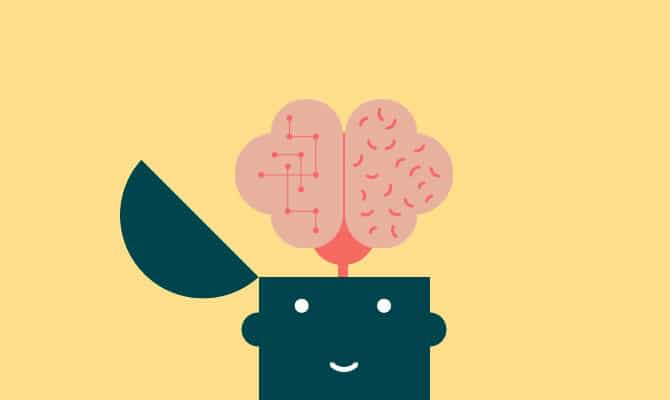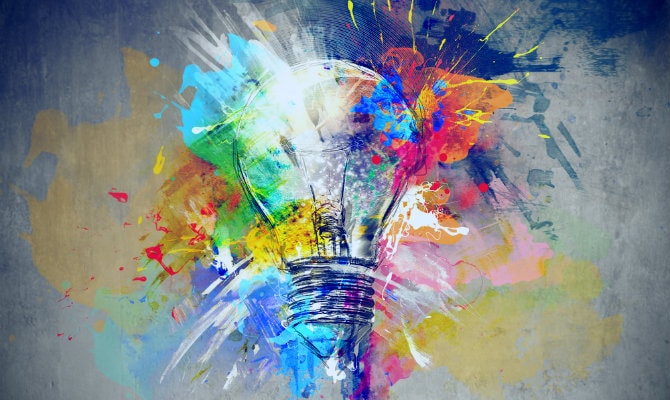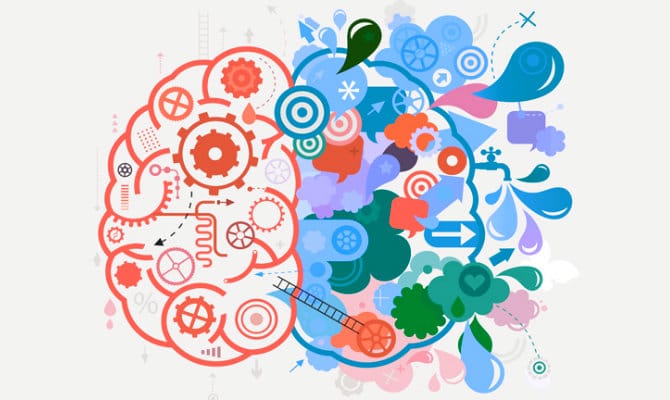We frequently observe that there are people with particular abilities, which allow them to create objects, obtain products and / or provide solutions to different needs or problems in life. Each one does it differently, and this will depend on the way in which their creativity. In order to know a little more about this topic, we explain in the following article some types of creativity raised by different authors in the area.
What are the types of creativity?

Creativity can be defined as a process in which individuals, from a feeling of spontaneous inspiration, have the ability to develop a specific product; or simply arrive at a solution to a situation using your knowledge and skills.
It is a highly studied ability, not only from a psychological point of view, but also providing it with an infinite number of applications in the field of science. Precisely for this reason it has been considered as a process, product and quality derived from a specific context in which an individual finds himself; in addition, also as a characteristic feature of the personality of the same.
This can be classified in different ways according to the different authors and theories raised so far; but from a general point, there are three types of creativity described below:
Normative creativity
It is one in which ideas arise in order to analyze different situations, and solve them. This is one of the most valued in the labor field, since it is the one that generates the greatest efficiency in relation to costs and benefits.
Exploratory creativity
Exploratory creativity is one in which the ideas that originate are not linked to a specific need or problem. However, this is not a limitation, since if the purpose of the thought were to provide a solution, different possibilities for it would be explored in the process. It is precisely for this reason that it is affirmed that this type of creativity stimulates the interrelation of the knowledge that is possessed.
Creativity by chance
As the name implies, in this case the creativity processes are carried out accidentally, resulting in very well received products. An example of this type of situation is understood by those known as “serendipity”.
Creativity according to various authors

1. Types of creativity according to Maslow
According to Maslow there are two types of creativity: the primary and the secondary. Both are considered as extremely important elements, which despite being motivated by different reasons, end up complementing or merging in a single process.
Primary creativity
Primary creativity is directly associated with the process of creative inspiration. It is characterized by spontaneity and improvisation, and is frequently developed with festive motifs; In other words, it is a natural and particular quality in each person.
Secondary creativity
Secondary creativity is one in which the processes of inspiration and creation are carried out in a controlled manner, in order to expose a specific final product. This is characterized by requiring large doses of preparation and effort, in an exhaustive exercise of discipline and dedication.
2. Creativity according to Jeff DeGraff
For his part, professor and researcher Jeff DeGraff distinguishes five types of creativity from an exploratory point of view: mimetic, analogical, bisociative, narrative and intuitive.
Mimicry
Mimetic creativity is defined as the ability to create from something already existing. That is, what is obtained from this process will be the result of the imitation or copy of something that is already known, so its degree of complexity is quite low.
The adjective "mimetic" comes from the word "mimesis", used to denote the imitation of others. This is one of the most basic types of creativity, since it does not require preparation and can even be developed by animals. In fact, in the educational field it is widely used to be able to apply the different techniques or knowledge acquired in one subject in others.
Analog
It is one in which the ideas that arise are the result of different analogies, made from the relationship of the knowledge acquired. This means that in order to understand those things that are unknown, the individual resorts to those that they do know; Through comparison based on similarities and metaphors, it is possible to digest the new information.
Bisociative
La bisociative creativity It is one in which two completely different ideas are joined together, which leads to the creation or solution of something. It is characterized by fluidity, flexibility and flow, three terms condensed into one known as the 3F. These suggest that bisociation is carried out through the meeting of very different ideas, which can be ingeniously ordered at a certain point in the process, which will be enjoyable for the individual and will allow the flow of the same to obtain the result.
Narrative
It refers specifically to the ability of a person to create stories. To do this, it uses the connection of the various elements that make up a narrative, such as the characters, the environment, the actions, the time, the type of narrator, and certain resources such as dialogue, description and good grammatical exercise.
Intuitive
It is one in which the ideas that originate are not based on pre-existing images or knowledge, so they require a wide capacity for abstraction.
Intuitive creativity is a very useful quality for solving problems, since it allows developing ideas based on the principle that every situation has a solution, and limitations, ironically established from existing knowledge, are completely omitted.
This is one of the types of creativity that can be stimulated or be developed through the practice of meditation and yoga, since they promote mental purification and awaken consciousness.

3. Creativity according to Edward Taylor
Alfred Edward Taylor, for his part, presents five ways in which creativity is manifested in the individual:
Expressive
It is one that manifests itself in the first years of life, so it has congenital attributions, that is, it includes abilities of each person. It is from it precisely that other skills can be developed.
Productive
This is one of the types of creativity known for its practical nature, since it implies the development of skills, which will distinguish the individual.
Inventor
It is one in which the ideas that are generated arise from the use of experience and knowledge already acquired previously, in an original way.
Innovative
Innovative creativity is defined as that characterized by a high level of abstraction, which allows modifying, improving or creating a new process both in science and in the arts.
Emergent
According to Taylor, very similar to Degraff's classification, he posits that emerging creativity is one of the most complex, since it leads to the development of totally innovative principles, foundations and ideas. Naturally, these are poorly understood by the other levels described, since it is separated from the preset images.
4. Creativity according to Joy P. Guilford
Finally, Joy P. Guilford presents a different classification of creativity from Degraff and Taylor.
Phylogenetics
Is that characteristic and dominant creativity in each person, and that is expressed and developed independently of the type of training they have undergone.
Potential
Closely related to phylogenetics, it is that derived from the particular aptitudes or abilities of each person, which make up their potential. Potential creativity is what allows the individual's relationship with the environment, and therefore, its transformation.
Factual
It manifests itself at the end of the creation process, so it can be defined as the expression or product of it. It is closely related to the kinetic type.
Kinetics
As the name implies, it implies movement. Kinetic creativity is one that manifests itself in the creative process.
As has been shown, the creation process requires the use of different brain resources (despite the fact that these are mainly associated with the right hemisphere of the brain); which are developed in a particular way in each person. Its understanding and exploitation in the academic, work or personal field requires an extensive study of them, and that is the importance of knowing the different ways in which it can be carried out.